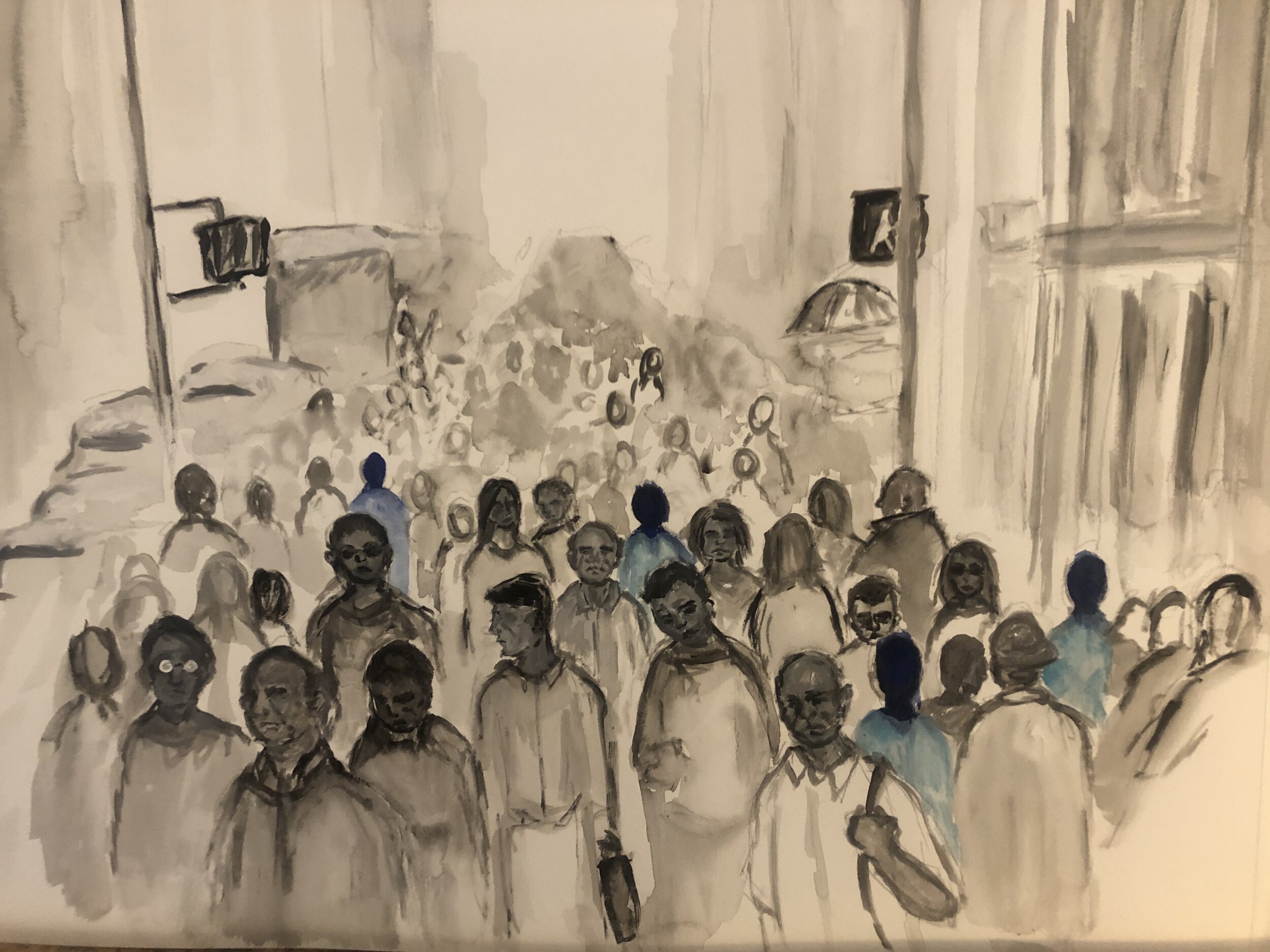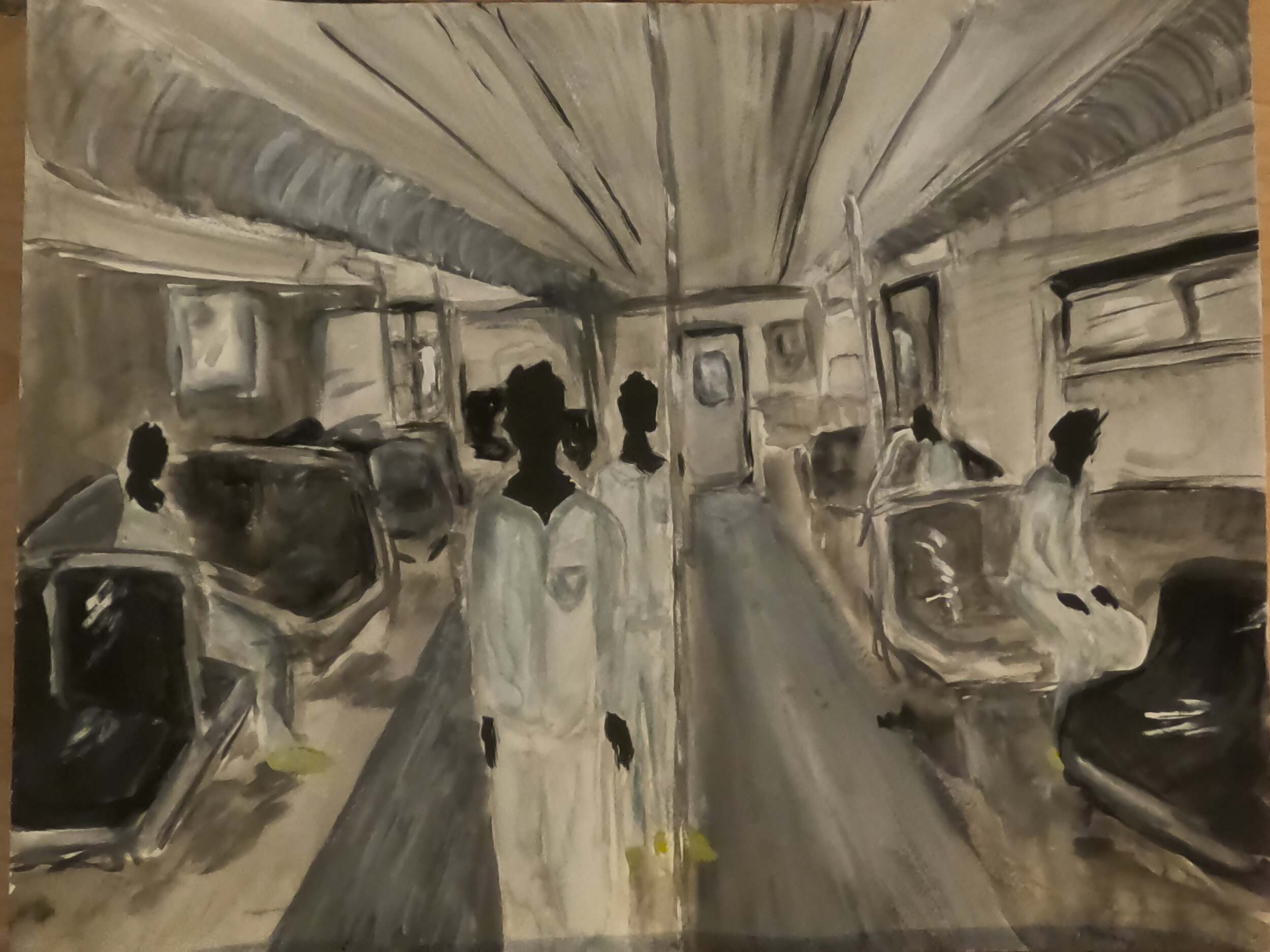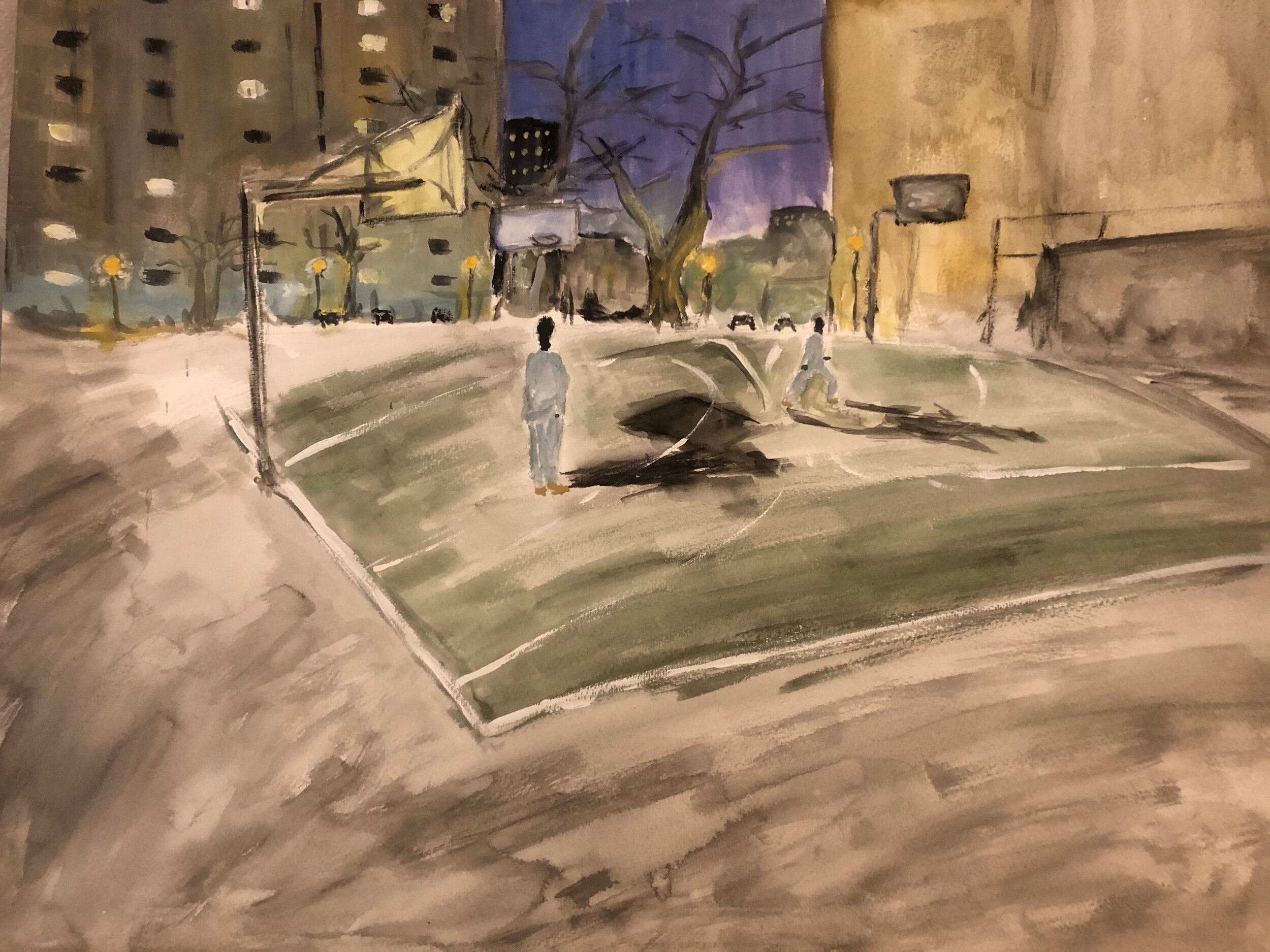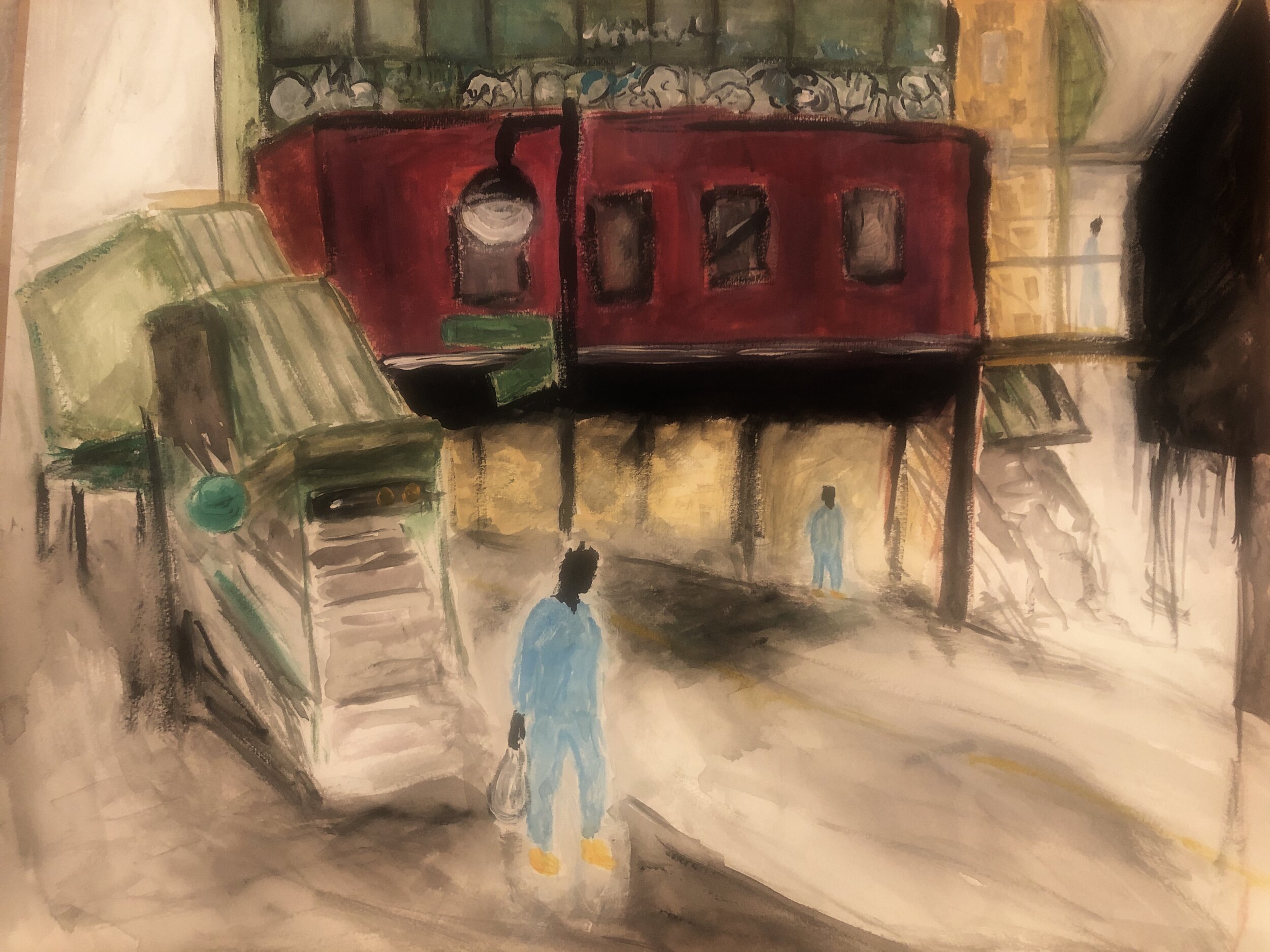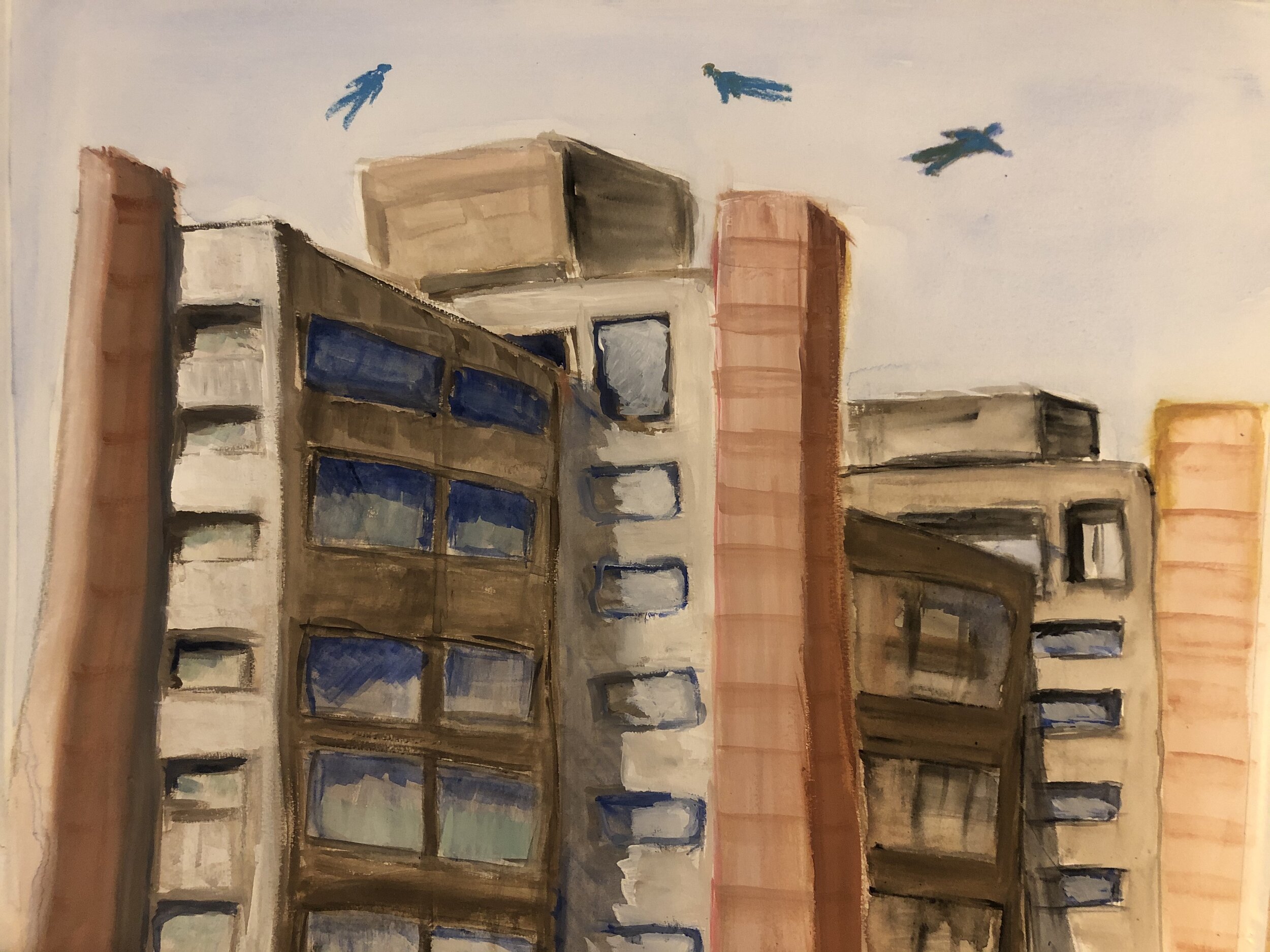Rachel Wyman’s “Blue Pajama Series” (Intima, Fall 2021) made a surprise landing inside me, explained myself to myself in a way I hadn’t realized I’d needed. Here I explore a dialogue between “Blue Pajamas” and my essay “Toe Talk” (Intima, Spring 2022). I have no background in visual art or its evaluation—this is simply a description of my experience with Wyman’s work.
Barbara West is a writer and hospice nurse, having focused on wound/ostomy/continence and foot care for the past decade. Her essay “Toe Talk” appears in the Spring 2022 Intima.
“Crowd,” the first in the series of five paintings, looks like a watercolor done in black and white, or sepia, of people, mostly heading our way, filling a narrow street. There’s a weariness to their faces, without particular distress. The figures’ lower edges descend from darkly outlined shoulders and fade into nothing, or each other.
The only color in “Crowd” is the watery light blue of four figures in blue pajamas, scattered amongst the on-comers. Although their heads are each a featureless black, their color and lack of outline give them a contrasting buoyancy, a luminous upward tug.
I think about Mr. Alvarado, my nail care patient in “Toe Talk,” how I found him in the crowded waiting room by what was written on his registration slip: “Hard of hearing! Gray sweater.” I choose Mr. Alvarado; blue pajamas choose our four figures.
“Train” is next. Anxiety builds as I search the interior of Wyman’s shiny subway car which is, again, nearly colorless but with emerging brown, some light yellow shoes. Five figures, their heads black silhouettes again, are dressed alike: V-necks, long-sleeves with chest pockets and matching pants suggest pajamas, but their garments are not the luminous blue I’m looking for. Just a hint of blue in a light wash over a shoulder or two, a blue echo in the concave signs where wall meets the train’s ceiling. This is “Blue Pajama Series,” what am I missing… or fabricating?
© Blue Pajama Series - Train by Rachel Wyman Fall 2021 Intima
I think about Mr. Alvarado, my nail care patient, how I expected to help him with his toenails, but found not-much-need there. Struggled to find my role.
Wyman’s commentary starts here: “Modern urban life is stressful, alienating and chaotic, and what it requires of people can literally be crazy-making.” The everyday moral distress of clinic work surfaces for me. I think about how the time I spend listening to Mr. Alvarado shortchanges the next patient.
© Blue Pajama Series - Court by Rachel Wyman Fall 2021 Intima
Now “Court”—two figures in light clothes, just a suggestion of blue. I search blue all around the basketball court, but find only shadows, a square of deep purple sky, a bare tree standing witness. I think about moments of grace. How Mr. Alvarado and I find ourselves crossing barriers of hearing loss, age, trauma, and culture.
Wyman’s commentary turns to her workplace, the psych ward, “Should someone manage to elope, the blue pajamas give away that person as Patient.” I’m reminded of Emily Maloney’s 2022 collection of essays Cost of Living, examining what separates us into provider/patient, healthy/ill, insured/uninsured.
© Blue Pajama Series - Walking by Rachel Wyman Fall 2021 Intima
In “Walking,” green and red delineate street signs, buildings; two pajama-wearers reorient me with their luminous light blue. There are no “normal” people left.
I think of Mr. Alvarado, perfectly 101-years-old. He’s survived the burns, the POW camp, but struggles with everyday news: ongoing wars, cruelty. Wonders: what is his role? Inquires politely about physician-assisted suicide.
“Flight” is last in Wyman’s series. The crowded figures are no longer people, but heads and shoulders of the skyscrapers themselves, in muted browns, yellows, blues, and grays. Three human figures float in the white sky above, completely blue now, head-to-toe. Weightless, soaring.
© Blue Pajama Series - Flight by Rachel Wyman Fall 2021 Intima
Barbara West is a writer whose second book, a work-in-progress memoir What the Others Are Here For (And What If I’m One of Them?) explores tension between Christian/Buddhist directives to ‘help others’ and her 12-step program’s directive to ‘focus on yourself and stop bothering everyone else.’ Her work has appeared in Bellevue Literary Review, Another Chicago Magazine, the American Journal of Nursing, Shambhala Times, Flying South, among others. She lives in Corvallis, Oregon, where she works as a hospice nurse, having focused on wound/ostomy/continence and foot care for the past decade. Barbara-West.com

